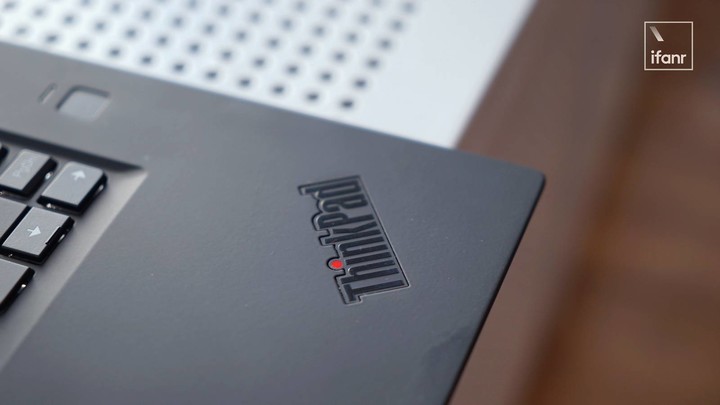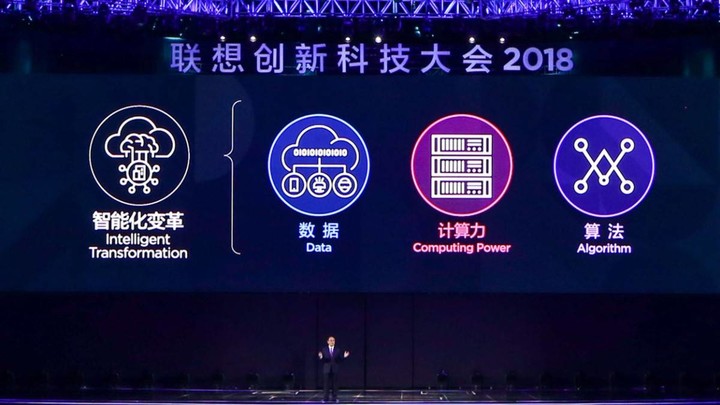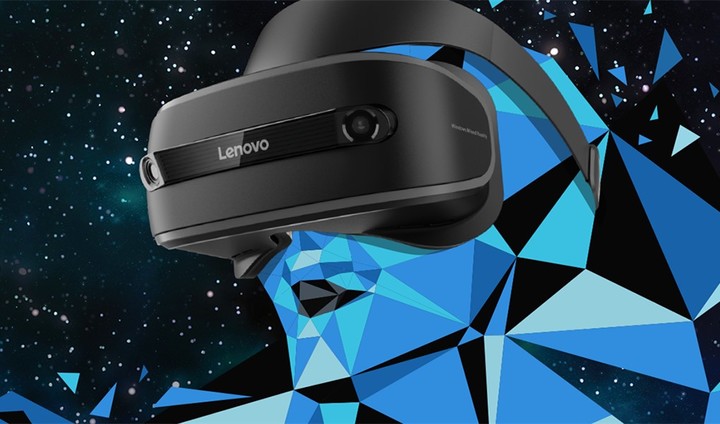This November is a very special month for Lenovo. November 1st is the date of Lenovo’s founding. This company, which is familiar with consumers and has deepened its business in the PC business, is 35 years old. For the sake of the situation, its annual income has also exceeded 350 billion yuan. Then on November 8, Lenovo announced the second quarter of the 2019/20 fiscal year: quarterly revenue of 94.8 billion yuan, a record high of Q2, net profit of 1.42 billion yuan, an increase of 20%.
The next November 14-15 is Lenovo’s annual Tech World conference. At last year’s Tech World conference, Lenovo unanimously announced its new position: Lenovo is one of the few companies that can consistently leverage all the elements of intelligent factors. In the past few days, when Lenovo Group announced its earnings report, the title was “Lenovo Group’s second-quarter profit before tax increased by 45%, and the intelligent transformation into a new growth engine”.
Transformation is the norm of Lenovo.
The Art of Balance
In Lenovo, there is a department that does not often speak out to the outside world: BT/IT (Business Transformation/Information Technology).
Although it is normal for a Fortune 500 company to set up a CIO position, it is rare for a CIO to be responsible for “business transformation.” During the WebSummit (Internet Summit) in Lisbon, Ai Faner had an exclusive interview with Lenovo Senior Vice President and CIO Arthur Hu. The keyword is naturally “transformation”.
When Arthur Hu joined Lenovo 10 years ago, his position was Senior Director of Business Transformation for the IT department. It can be said that in his Lenovo career, the main job was to help Lenovo transform.

For popular perception, many of Lenovo’s highlights belonged to several major acquisitions: the acquisition of the IBM PC business in 2005; the acquisition of IBM’s x86 server business and Motorola’s mobile phone business in early 2014. It can be said that every time the acquisition, Lenovo’s business will expand greatly. For example, after the acquisition of IBM PC business, Lenovo’s PC business has grown by leaps and bounds, becoming the first in this market. With the x86 server business, Lenovo has a “heavy weapon” in its B-side business.
But these highlights are often just the pages of the media that have been seen for a few days. In fact, large acquisitions are a risky business practice, and the integration work after the announcement is a long way forward.
Before joining Lenovo, Arthur Hu’s job at McKinsey was to help Lenovo smoothly integrate the IBM PC business. It can be said that Lenovo and Arthur Hu have accumulated a lot of transformation experience in this acquisition and integration business support. He said:
In that era (the era of IBM PC and x86 server business acquisition integration), the responsibility and mission of business transformation is to ensure that Lenovo’s process, efficiency and competitiveness have always been in good shape, and BT/IT departments have to Responsible for the realization of business value through effective workaround management.
Acquisition can rapidly expand the scale of the company, but inevitably, the initial acquisition will have an impact on the process and efficiency of the entire enterprise. The integration work supported by Lenovo’s BT/IT department is like driving a car on a highway, while maintaining speed and replacing parts.
This is the difficulty of the previous Lenovo business transformation: how to balance the contradiction between scale expansion and process efficiency.

▲ Lenovo Data Center
From a historical perspective, Lenovo has also implemented two transformations, one from product orientation to customer orientation; the other is from a single PC business to a diversified business. Arthur Hu said that in the process of transformation, Lenovo’s BT/IT department as a platform department needs to “know” the most important point is “what is a platform.”
The reason why this verb is to use “hold” is because the back is also a balanced art. Arthur Hu and Lenovo’s BT/IT department will always need to balance efficiency, cost and cost, he said:
The fastest of course is that everyone is fighting for each other, from personnel, legal, and financial, because of the fastest, of course, the fastest, and of course the most expensive. The lowest cost is definitely to say that everyone uses the platform. This is the least flexible. It is not good to go to any extreme.
So I think the core question is how to balance this. What are we looking for in the group to be able to platform, and we need to have enough flexibility and speed to quickly identify which skills to which business? It is special, and gives enough space flexibility and resources to help each division bring its own differentiation and competitiveness.
Arthur Hu is more of a business support in Lenovo, but he often goes to the market to communicate with other companies. After the progress of the business and the exchanges with the outside world, he recently corrected some of the previous misunderstandings about scale, and also made new discoveries: scale is not a hindrance to business transformation, and transformation will not be simple because of small scale. Arthur Hu recently approached a three- or four-person company, the CEO of the company.Arthur Hu said that it took 15 months for their company’s system to enter a stable environment. This incident gave Arthur Hu a new inspiration:
The technology needed for business change management is not based on small scales, but it is also the most difficult to effectively change everyone’s behaviors and habits.
From this point of view, Arthur Hu believes that Lenovo has a good foundation for transformation:
I think the better part of the previous period is that we have built very good results in the past 15 years. We have become an international company, we have a diverse culture, which is the basis for transformation. Because everyone has a common language, everyone has common habits and ideas, which makes our unified thinking and unified management more accelerated.
▲ Arthur Hu speaks at WebSummit
“Cut the pearl into a necklace”
From the perspective of Lenovo’s revenue and profits in the past year, Lenovo’s initial success from “from a single PC business to a diversified business”. This is reflected in Lenovo’s PC business still steadily occupyingIn the market’s first position, the pre-tax profit of the mobile business reached 400 million yuan. It is also the continuous release of the potential of Lenovo’s data center business and data intelligence business, which are the key to Lenovo’s business transformation at this stage.
Smart IoT, Smart Infrastructure and Smart Verticals are the 3S strategies proposed by Lenovo’s new fiscal year. At this stage, the core work of Arthur Hu and Lenovo’s BT/IT department is to support the development of the 3S strategy.
This 3S strategy does not appear out of thin air. The corresponding is actually the new positioning of Lenovo proposed by Yang Yuanqing last year. “There are very few companies that can uniformly utilize all the intelligent factor assets.” Arthur Hu said:
From mobile edge computing, servers, data centers, to supercomputers, PCs, we have these elements. These are like some dots or pearls. From our BT/IT department, we need to focus on how to put these pearls and dots together and become a necklace.

The core method of stringing pearls into necklaces is also mentioned, that is, “data is fuel, guided by computing power, and driven by algorithms.”
To help Lenovo’s customers achieve intelligent transformation, Lenovo itself must be intelligently transformed. ratioLike artificial intelligence technology, many people blow it to the vent, and some people use it in practice. Arthur Hu and Lenovo’s BT/IT department need to consider which part of the value chain to embed artificial intelligence. Now there are many cases of artificial intelligence landing in Lenovo. It runs through pricing, quotation, customer service, supply chain management, smart factory. and many more.
Arthur Hu gave many examples to illustrate the use of artificial intelligence technology to promote the business: through the analysis of user images on the Lenovo e-commerce website, through the intelligent recommendation engine to display Lenovo’s products targeted, improve the purchase rate Three or four times; through the data collected on the factory production line to build a model, you can make problem prediction and early warning; use artificial intelligence in supply chain procurement to improve the accuracy of procurement planning, to ensure financial health…
Sometimes, the new technology will not only improve efficiency and reduce costs, but also some unexpected surprises. Nowadays, many companies adopt the form of customer service of robot dialogue. Some do well and some do poorly, depending on internal knowledge management. Lenovo also enabled robot chat service in the internal system to cope with the problem of resetting the password.
It was originally an improvement in the use of artificial intelligence to solve small problems, and Arthur Hu found that there were two places that exceeded their expectations. First of all, this robot chat has greatly improved the satisfaction of employees, because there are about 35% of the problems without manual intervention. Compared with the artificial customer service with different waiting times, there is no waiting time for robot chat. The second point is that when facing the robot, the problem that the employee would not ask in the mail or the phone will also be asked. This is because chatting with the robot does not have the feeling that “I am asking questions that are silly and embarrassed”. Through the analysis, the Lenovo BT/IT department can also identify potential, previously undiscovered issues.

The artificial intelligence technology is a typical example within Lenovo. Unlike Lenovo Ventures and Lenovo Research, which is aimed at more medium- and long-term technologies, as a Lenovo CIO, Arthur Hu and his Lenovo BT/IT department are treating There are more factors to be considered in the attitude of technology, he said:
From a CIO perspective, we are more concerned with how to use the most advanced technology to drive our business today and accelerate future new business models.
The core of this philosophy is that technology and business will get closer and closer. On the one hand, technology can’t reach actual business can only be empty talk; on the other hand, future business transformation and development are inseparable from new technology. drive. This is actually a complex dimension of thinking, Arthur Hu said, they need to understand the trend of the industry, but also to fully grasp the company’s strategy, and finally analyze the possibilities and trends of technology, only to discuss the possibility of standing on the intersection of these three In order to get technology and business closer. This is also the topic of his speech at this Lisbon WebSummit: Corporate investment in technology must be forward-looking on the one hand, avoiding technical speculation on the other.
Therefore, Arthur Hu needs to face emerging trends and uncertainty in the field, so in fact, Lenovo has also experienced some failed technical experiments, Arthur Hu said:
Not all of our internal explorations are successful. Any company that says that all explorations are successful, it must be because this exploration is not radical enough.
Lenovo’s 3S strategy advancement still has a long way to go. At this stage, the public mentioned Lenovo, and it is still the positioning of PC manufacturers. Of course, there are data center services and data intelligence services that are completely biased toward B. At the end, it is difficult for consumers to have direct contact. But for Arthur Hu, the measure of his success is also here:
Our challenge is to make the world think of Lenovo, knowing that it is not a traditional PC manufacturer, but really driving the next era, helping companies in all industries to transform intelligently. If in the future everyone thinks that Lenovo is just a traditional PC manufacturer, then no matter how good our AI lab is, no matter how good we are, no matter how many systems I deliver, then our work will not be successful.
